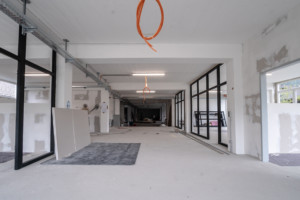 WRITTEN BY LARS HELLSTRÖM
WRITTEN BY LARS HELLSTRÖM
Lars is responsible for strategy and business development at Helvar, encouraging customers and the building ecosystem to create brighter spaces with intelligent lighting control solutions. He has over 20 years of experience in the ICT industry and holds dual master’s degrees from the University of Kaiserslautern (TU), Germany (M.Sc.) and Aalto University, Finland (MBA).
It’s that time of the year when many companies define the budget for the next year and beyond. Aren’t you, too? It always reminds me of a song by Simply Red: “Money’s too tight to mention,” and maybe your Chief Financial Officer (CFO) is even having it as their mobile ringtone.
Re-shifting priorities
Over the last years, changes in business and society have made companies re-shift their priorities, particularly in the Corporate Real Estate (CRE) and Architecture, Engineering, and Construction (AEC) industries.
Portfolios are reviewed against future fit to requirements coming from either Environmental, Social and Ethical (ESG) regulations (for example, net-zero sustainability targets) or societal pressures (for example, personal safety, health, wellbeing, and hybrid work approaches). Take the office market segment as an example: downtown locations of A-class buildings no longer guarantee a low vacancy as ‘location’ as the core argument is softening a tenant’s decision-making process. It is increasingly amended by criteria like flexibility, health and safety, sustainability, commuter distance and others.
A study conducted by CoreNet Global and Locatee in Q3/21 shows that the most important decision companies are currently considering with regards to its office space is the changing workplace type mix (63%), determining (seat) sharing ratios (58%), lease renewals (53%), downsizing of locations (48%) and similar. Therefore, we will likely see process and space changes and, ultimately, location changes.
It will, however, also open opportunities to focus on renovations and retrofits, i.e., upgrades of existing building stocks. It can be expected that the first wave of renovation belongs to furniture movements and seating allocation. However, with an increased need for sound-proof spaces for video conferences, the second wave will already involve the moving or installing of walls (ironically a move back to office set-ups from the last century). Yet, this will also require a re-consideration of the lighting and air conditions towards a more demand-based, human-centric lighting and building control.
This in return allows for a fundamental re-design of how usage behaviours and data could be used to make the spaces compliant with the upcoming ESG and societal requirements. At Helvar, we call this creating “Brighter Spaces”.

Renovation is an investment into the future
There is no better time to start the renovation process than now. Or with the words of the Simply Red song – “When the money’s got a hold on you?”
Start the process with lighting control as an affordable way to lower your carbon footprint or improve your carbon handprint towards your tenants. It will probably cost less than 50% compared to HVAC upgrades (based on our experience) and can decrease energy consumption by up to 85%. Proper lighting and lighting control increase employee satisfaction and productivity (up to 64% fewer sick leave days through human-centric/biodynamic lighting). It may ensure your building is competitive with A-class location buildings.
Installing new lighting control also allows you to discover the space usage to optimise your space need (to save on rent) and save on cleaning and maintenance. Data sharing across different building control systems allow even more significant saving potentials.
But there is not only money in it for the investor and the tenant; contractors/installers and manufacturers would also benefit from focusing on renovations. Of the around 12 million non-residential buildings in the EU, 42% of non-residential buildings were built pre-1970, and 75% before 1999 ¹. Only 9% of the total stock has been renovated; thus, this is an opportunity not to miss out on.
Let’s discuss how we can help you to create ‘Brighter Spaces’ with renovations, despite “when money’s too tight to mention”.

Lighting control solutions can support wellbeing and create intelligent, adaptive office spaces. Explore the benefits of renovating your office lighting.
